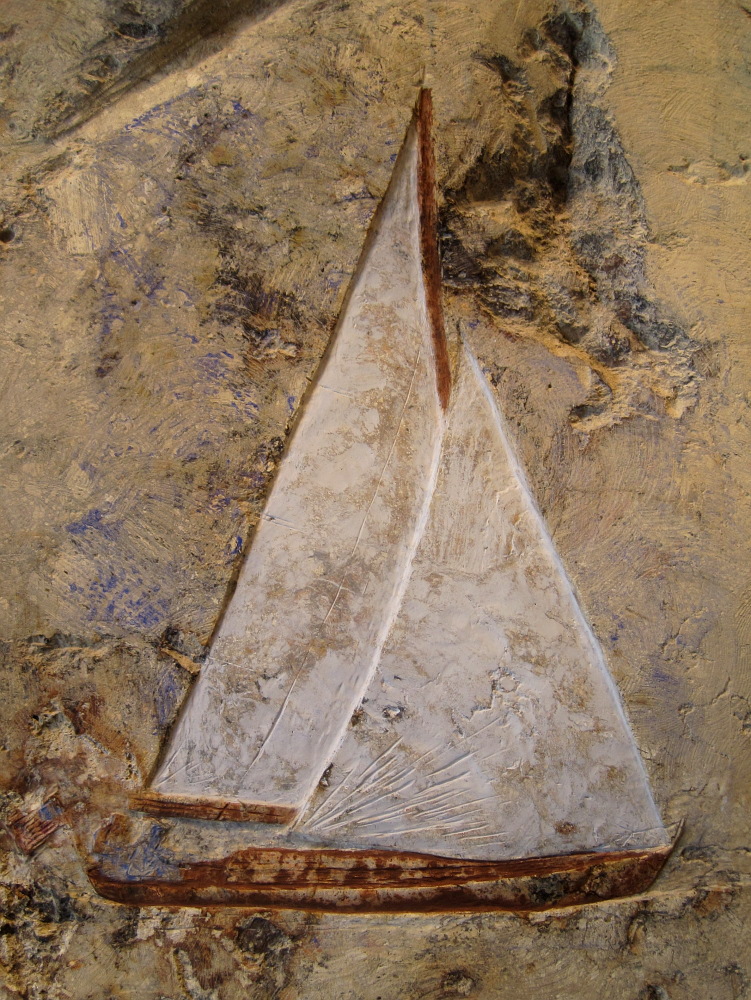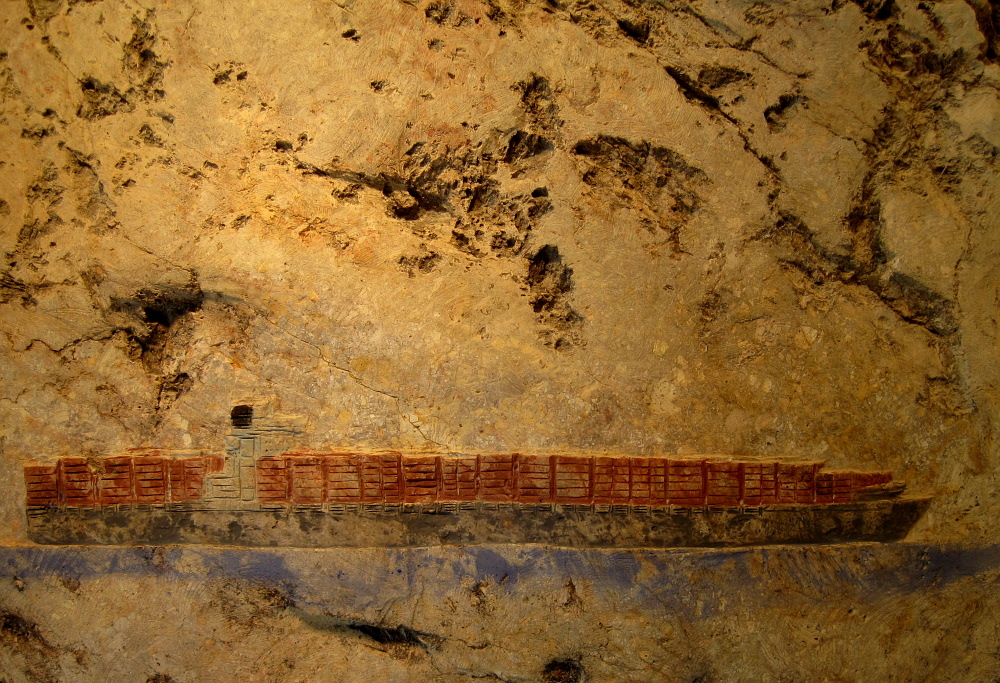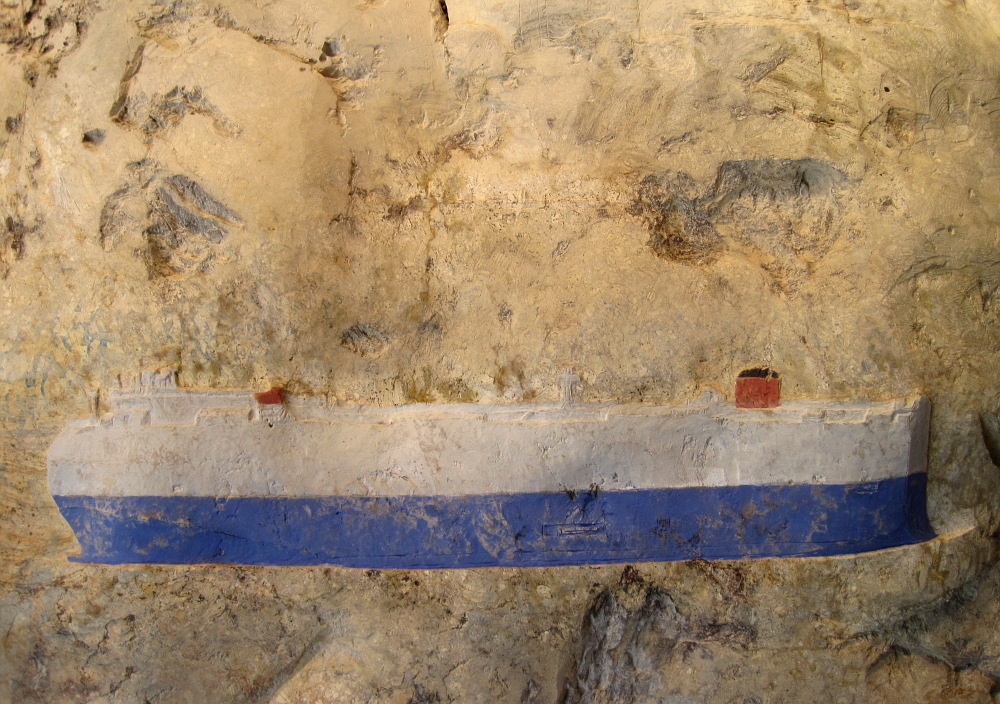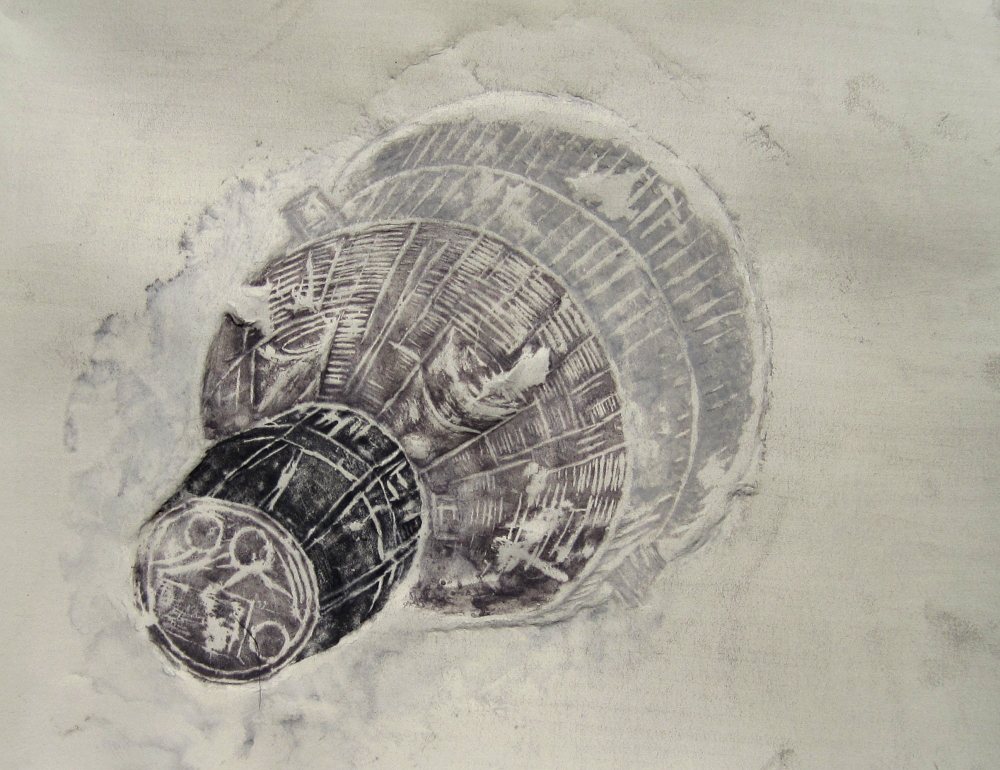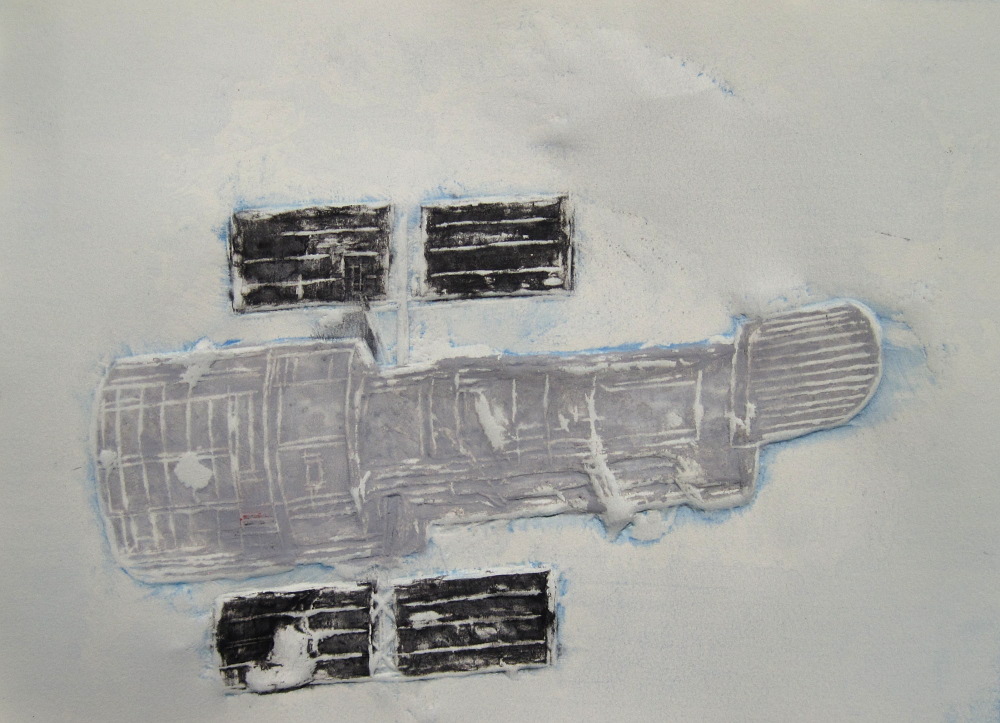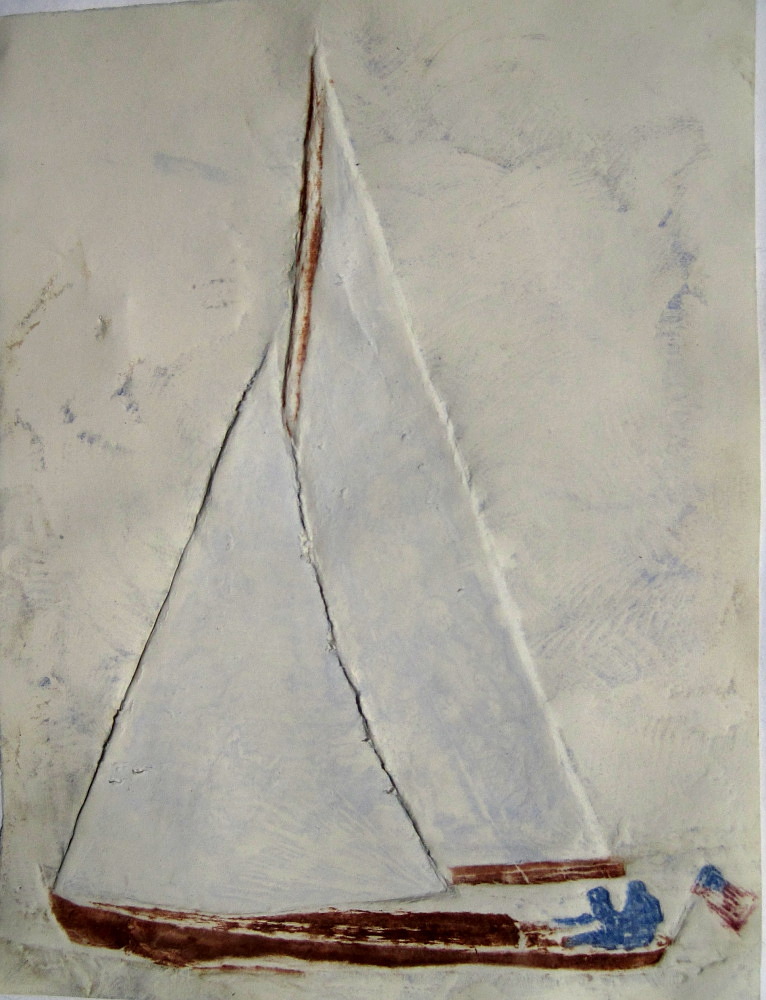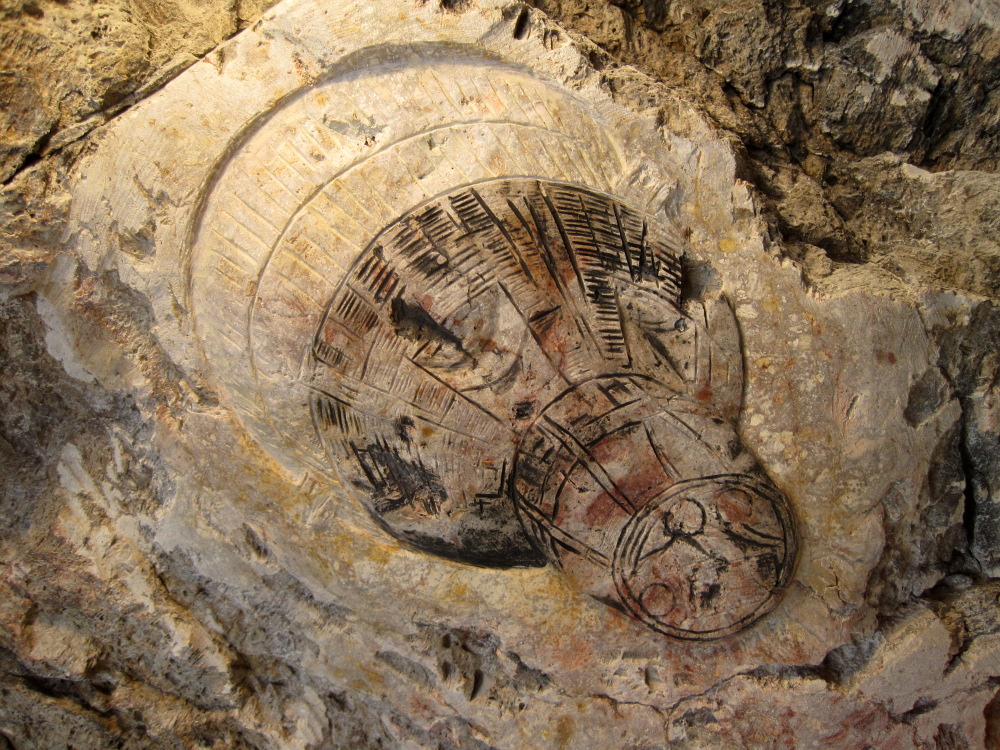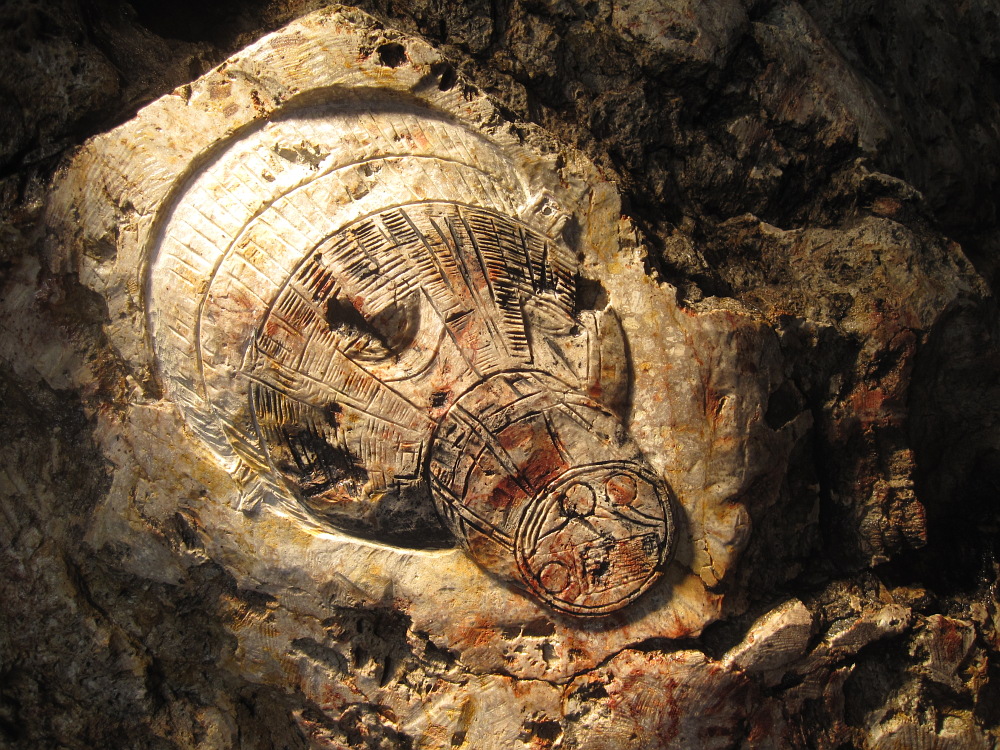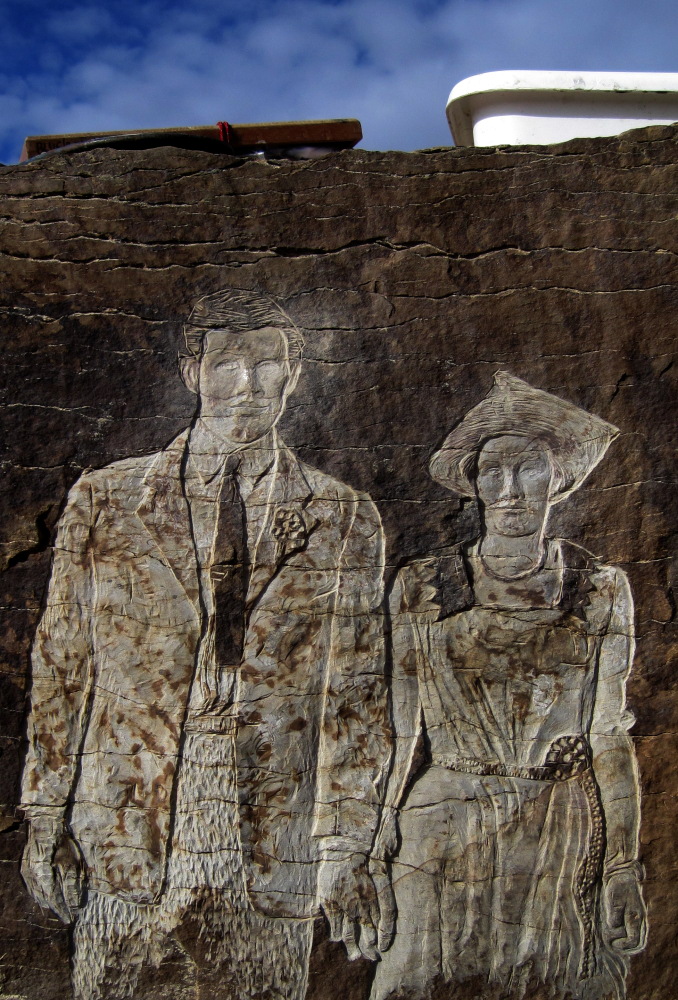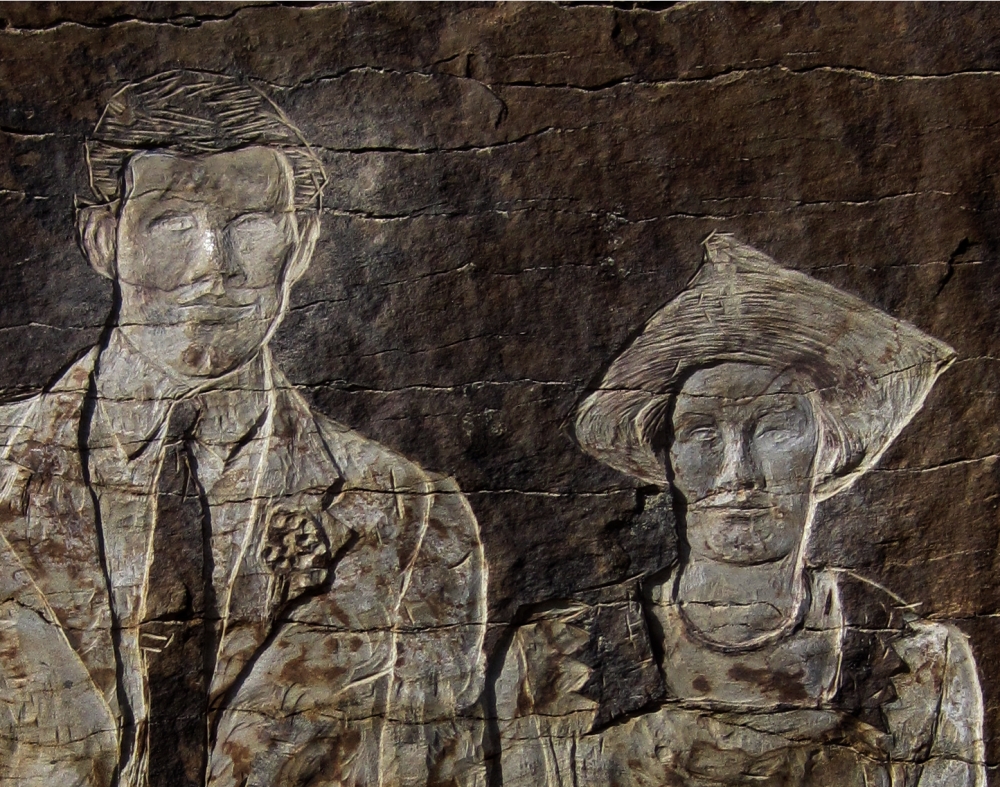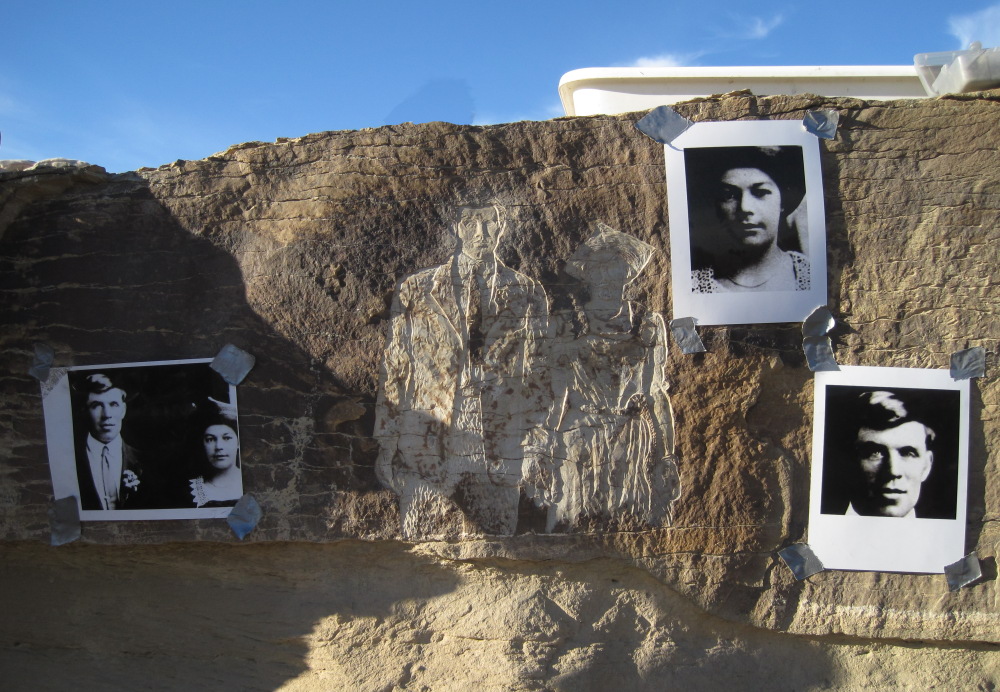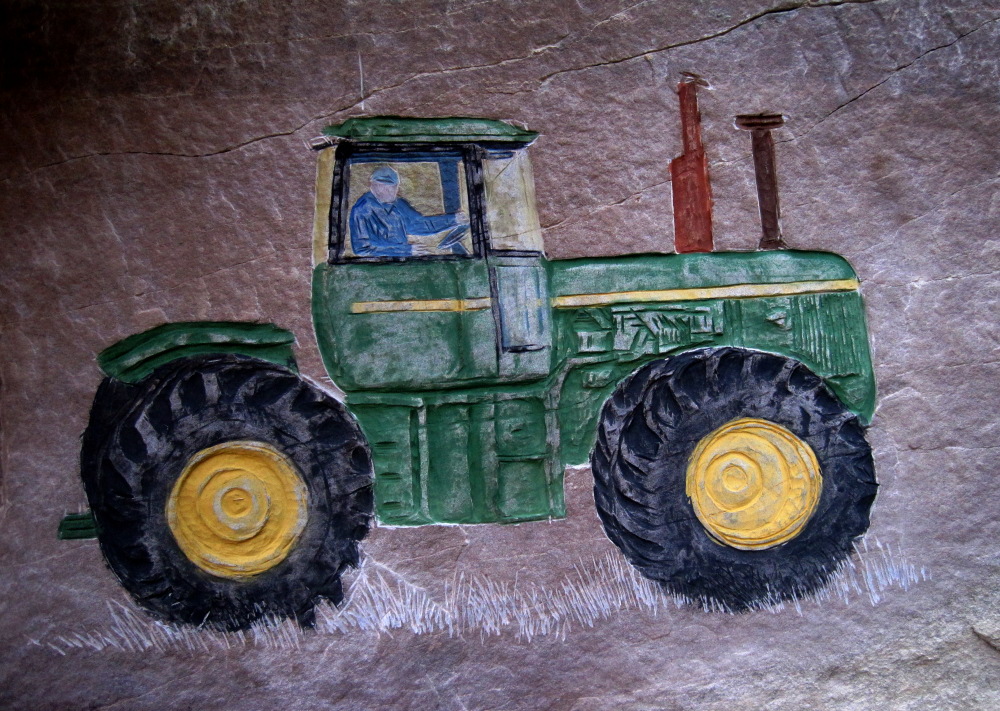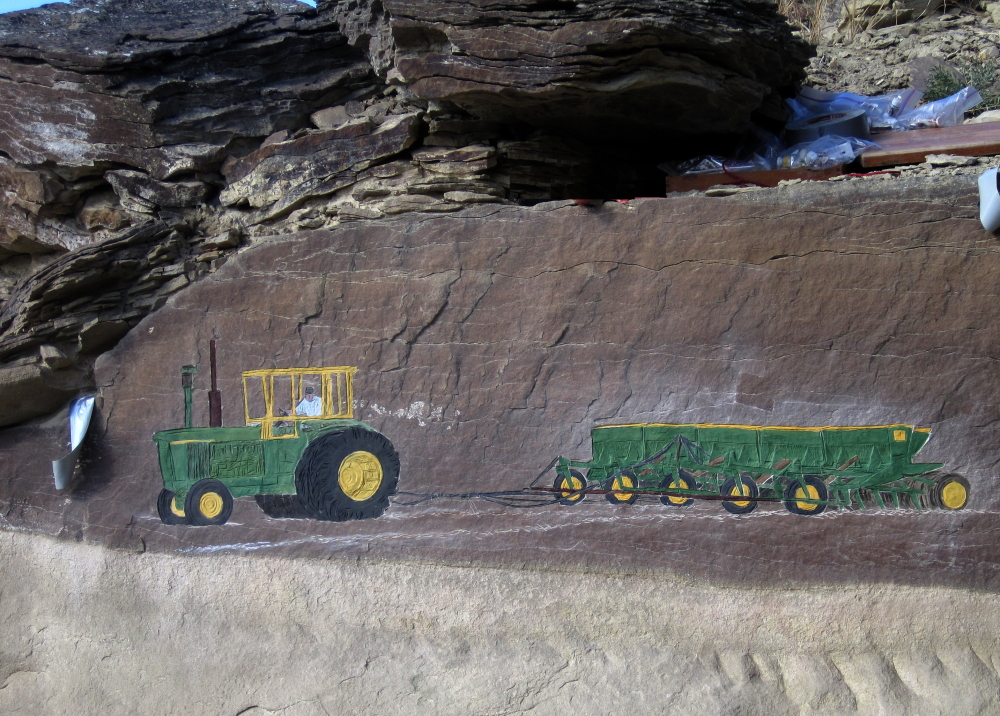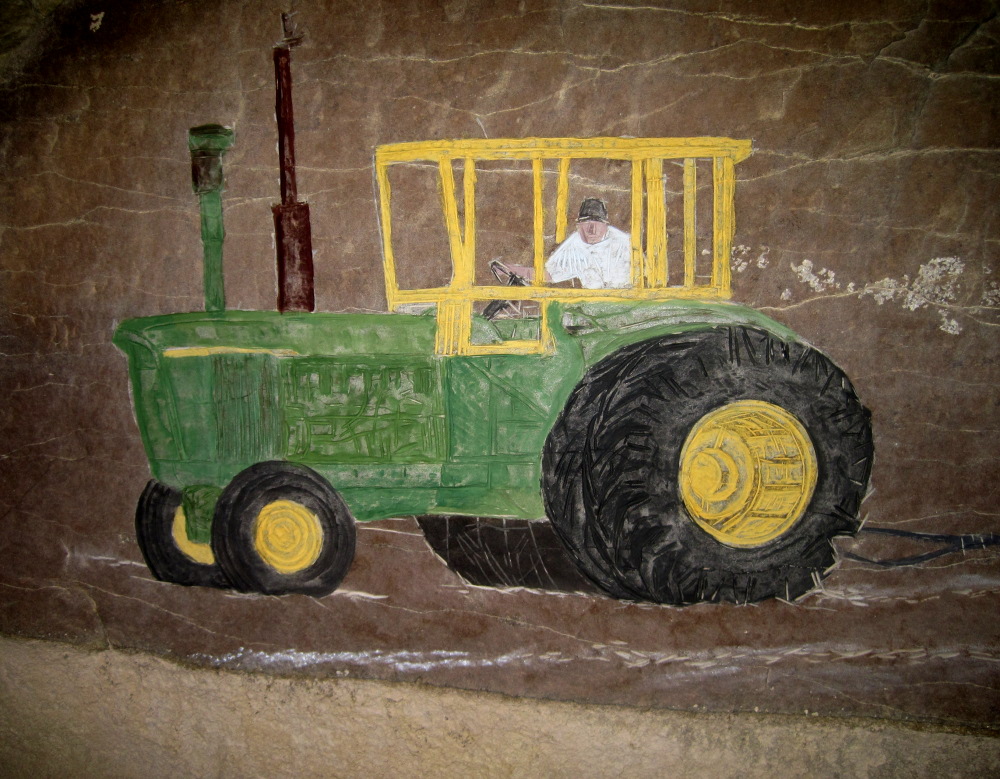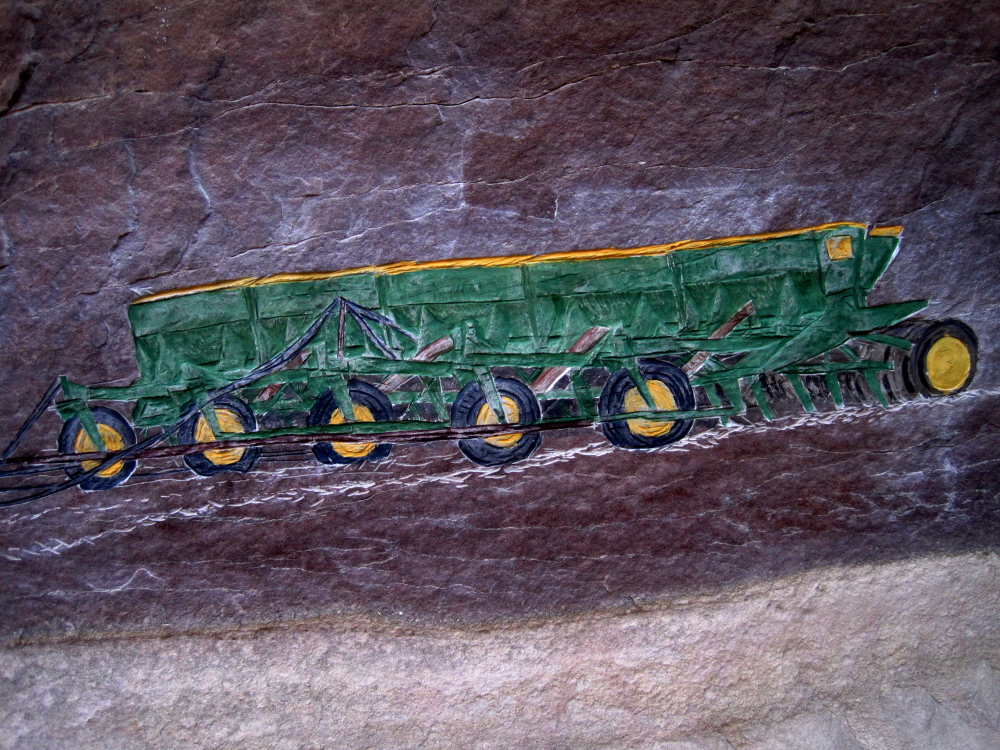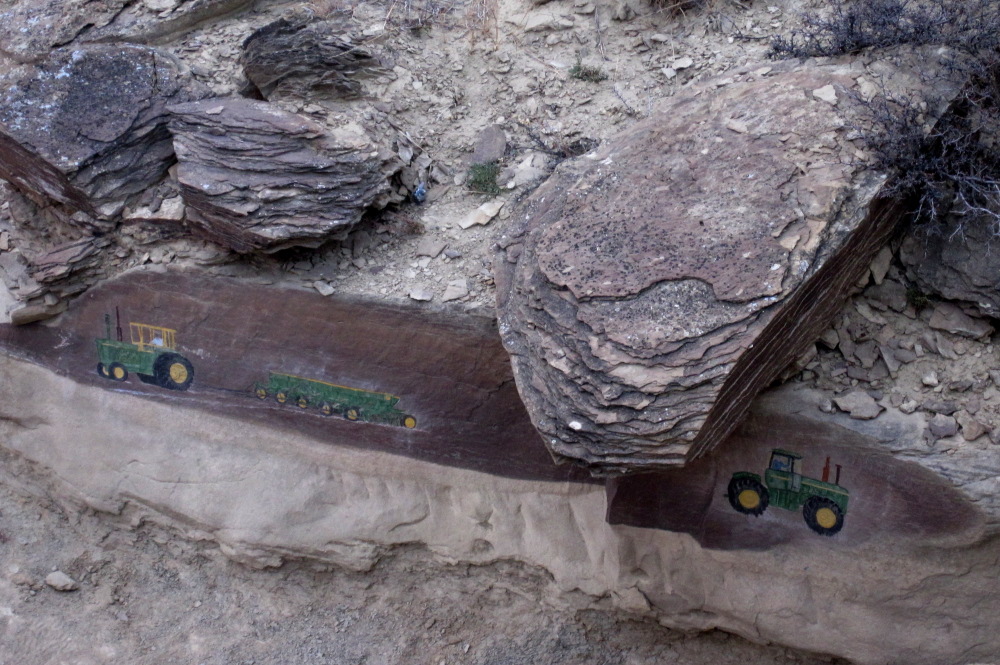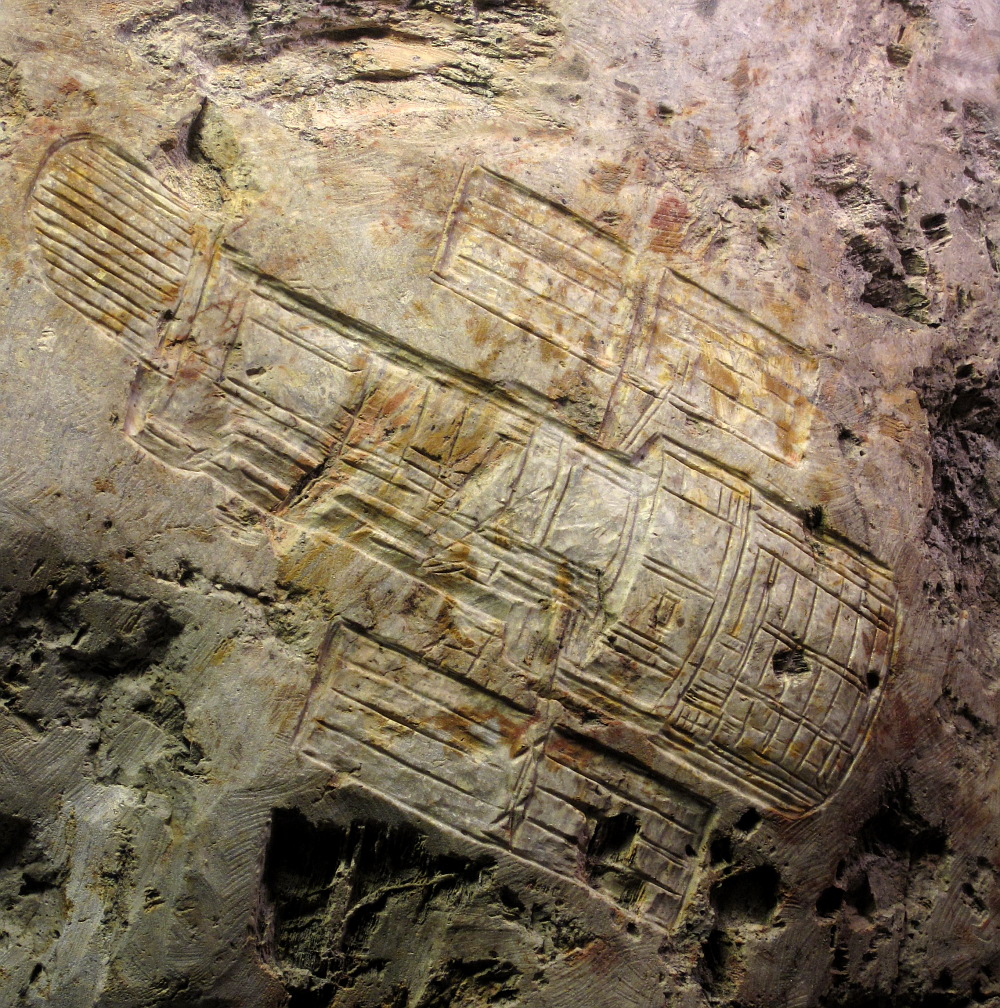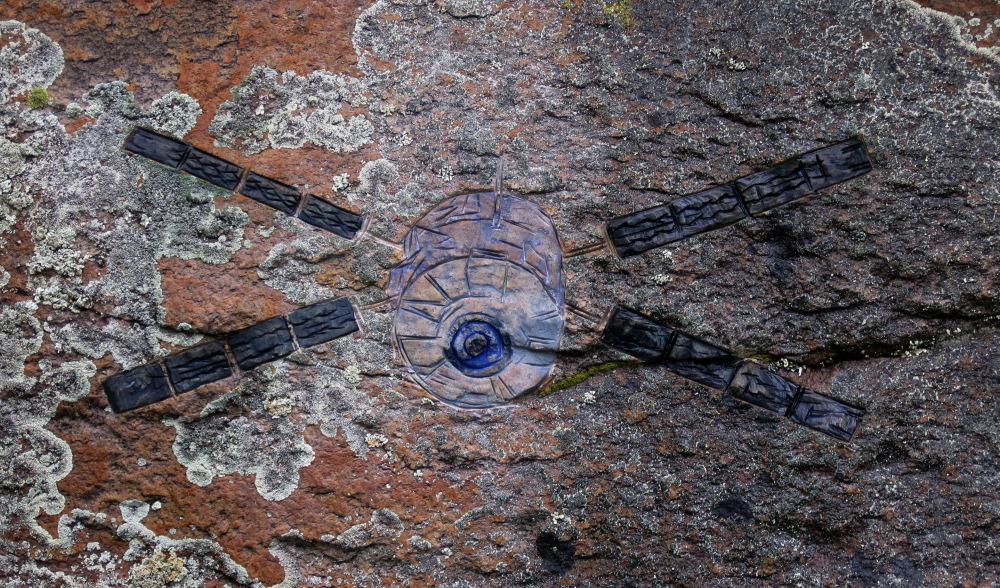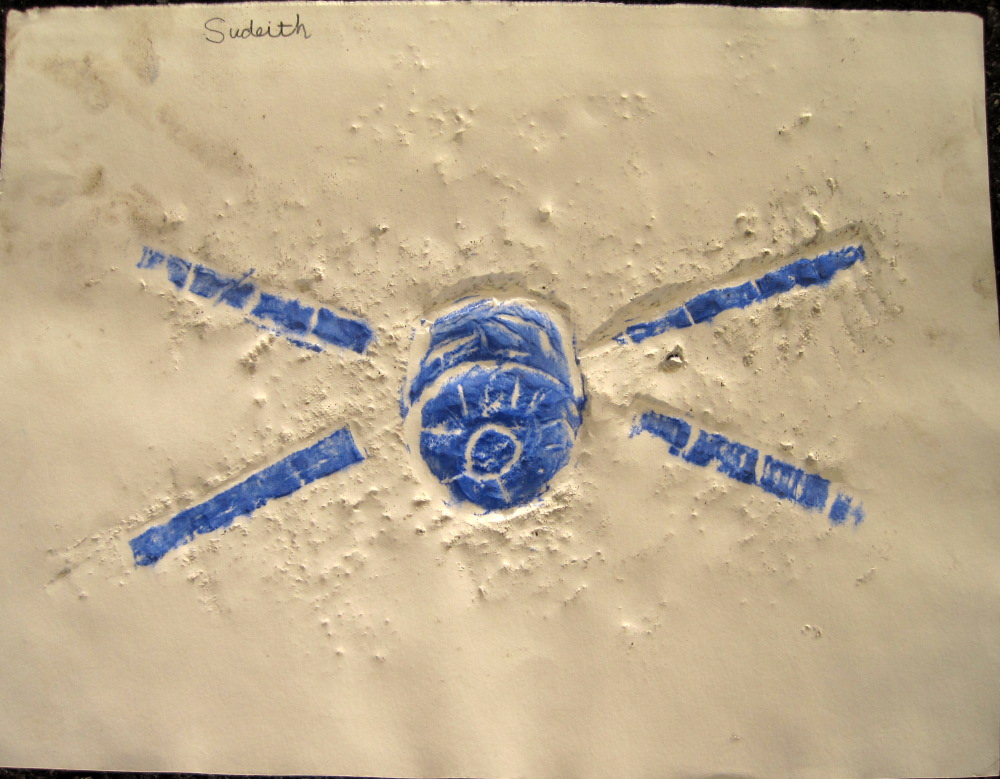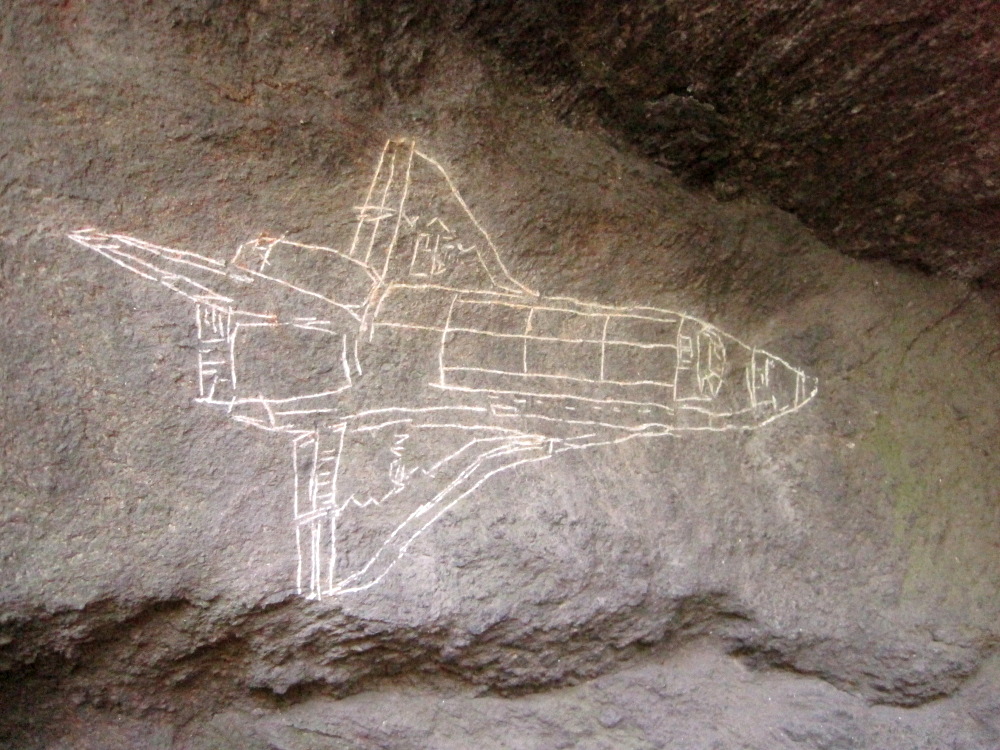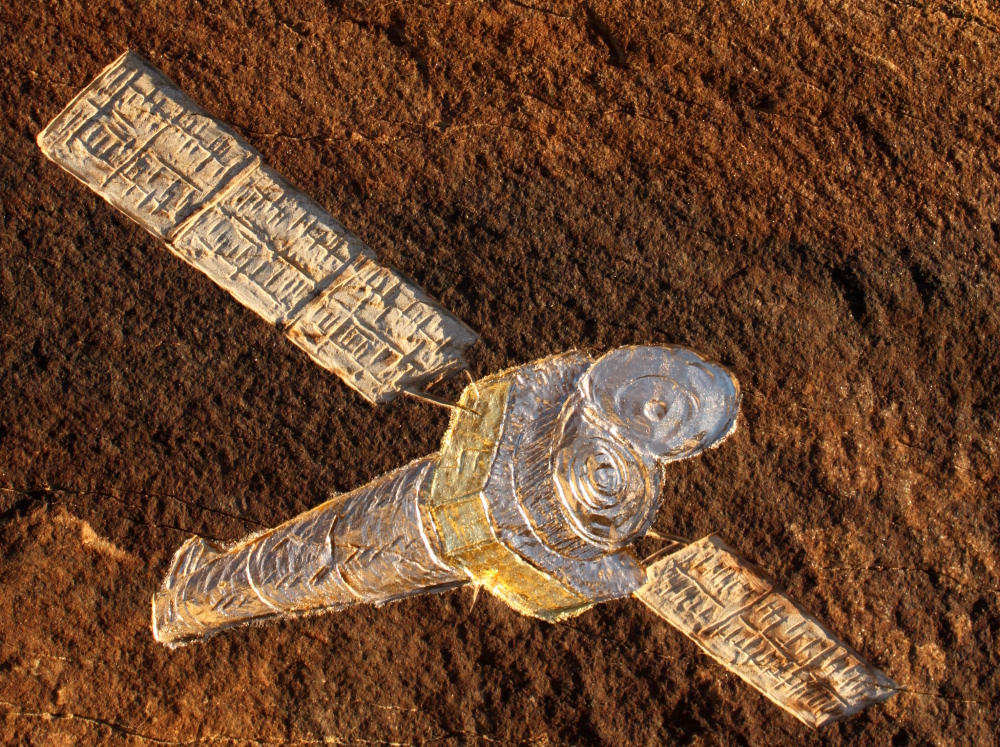Where: 1959 San Antonio Avenue, Berkeley, CA 94707
When: Saturday April 30 and Sunday May 1, from 10:00am to 8:00pm
What: Contemporary petroglyphs (rock carvings)
Who: New York artist Kevin Sudeith
Saturday April 30 and Sunday May 1, Kevin Sudeith’s new petroglyph featuring Bay Area and aerospace imagery will open in Berkeley.
For the past six months, artist Kevin Sudeith has been carving a petroglyph twelve feet wide and eight feet tall in North Berkeley. Carved into the bedrock are everyday images of the Bay Area: cargo ships, BART, sailboats. Petroglyphs are the most durable of human artworks, so this work will long outlast the artist and its viewers. The petroglyph is carved into a rock outcropping forming the north wall of a garage on San Antonio Avenue east of The Arlington at 1959 San Antonio Avenue, Berkeley. The petroglyph will only be open to the public on Saturday and Sunday April 30 and May 1 from 10am to 8pm, when the artist will be available to answer questions and discuss.
…
Sudeith’s petroglyphs are presented through a variety of ancillary mediums, including photography, video, collage, a relational database and a unique form of printmaking: Sudeith makes archival impressions of the petroglyphs on paper, which will be on display and for sale to the public April 30 and May 1. To make the impressions, the carvings are painted with pigmented ink and then wet paper is applied to the carving; the paper absorbs the colored ink, capturing the three-dimensional space of the carving as an embossing.


